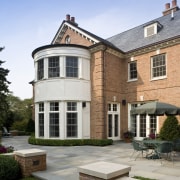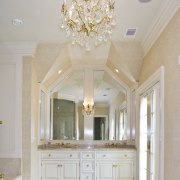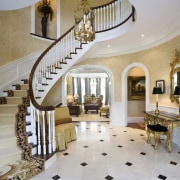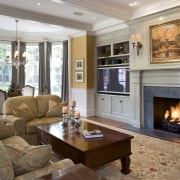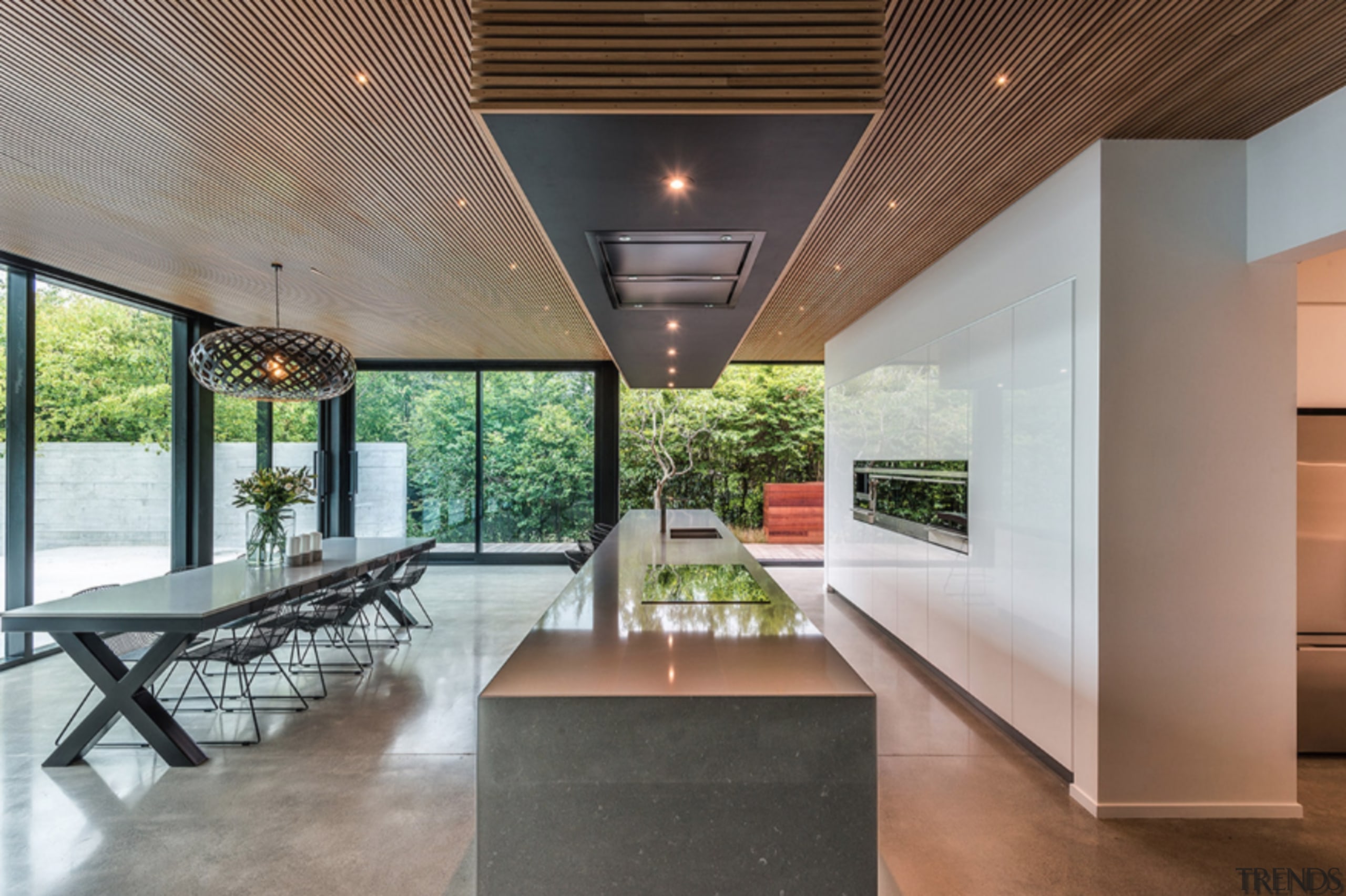History repeats
This Georgian-style manor reflects the architectural heritage of the Lake Forest, Illinois neighborhood
In the 1920s many American architects became renowned for their distinctive, European-influenced period architecture. Architects such as David Adler, Howard van Doren Shaw and Stanley D Anderson were among those commissioned by wealthy industrialists to build summer houses in the picturesque Lake Forest district outside of Chicago.
The magnificent properties designed by these French-schooled architects are still influencing the design of new houses in the neighborhood. This house, designed by architect John Krasnodebski, reflects the Georgian architectural style that was much in demand in the '20s.
"The owners wanted a house in the true Georgian tradition, rather than a hybrid of styles," Krasnodebski says. "The design had to be pure the symmetry, proportions and materials all needed to be in keeping with the period."
To maximize sunlight and the building's exposure on a large corner site, the designer positioned the house on an angle to the bisecting lanes.
"The site is not flat, so the house is slightly elevated in this position, which adds to its stature but doesn't make it overpowering," Krasnodebski says. "There are still plenty of mature trees on the property, so the house appears to nestle into the land. It also has a sense of permanence that helps make it look as though it has been there for a long time."
Hand-molded bricks that have anaged patina reinforce this look. Similarly, the limestone columns at the front entrance, and the limestone architraves and pilasters reflect the Georgian heritage.
The formal symmetry of the house is also consistent with the architectural tradition, as are the hipped, slate roof and dormer windows.
"The subtle detailing of the facade is another Georgian reference," says the architect. "For example, the quoins at the corners and the horizontal brick banding that projects slightly from the walls are typical features. They create shadow lines and help break up the scale of the building so it is less monumental."
Other key period features include the symmetrical chimneys, wrought iron railings and arched windows with divided lights and keystones.
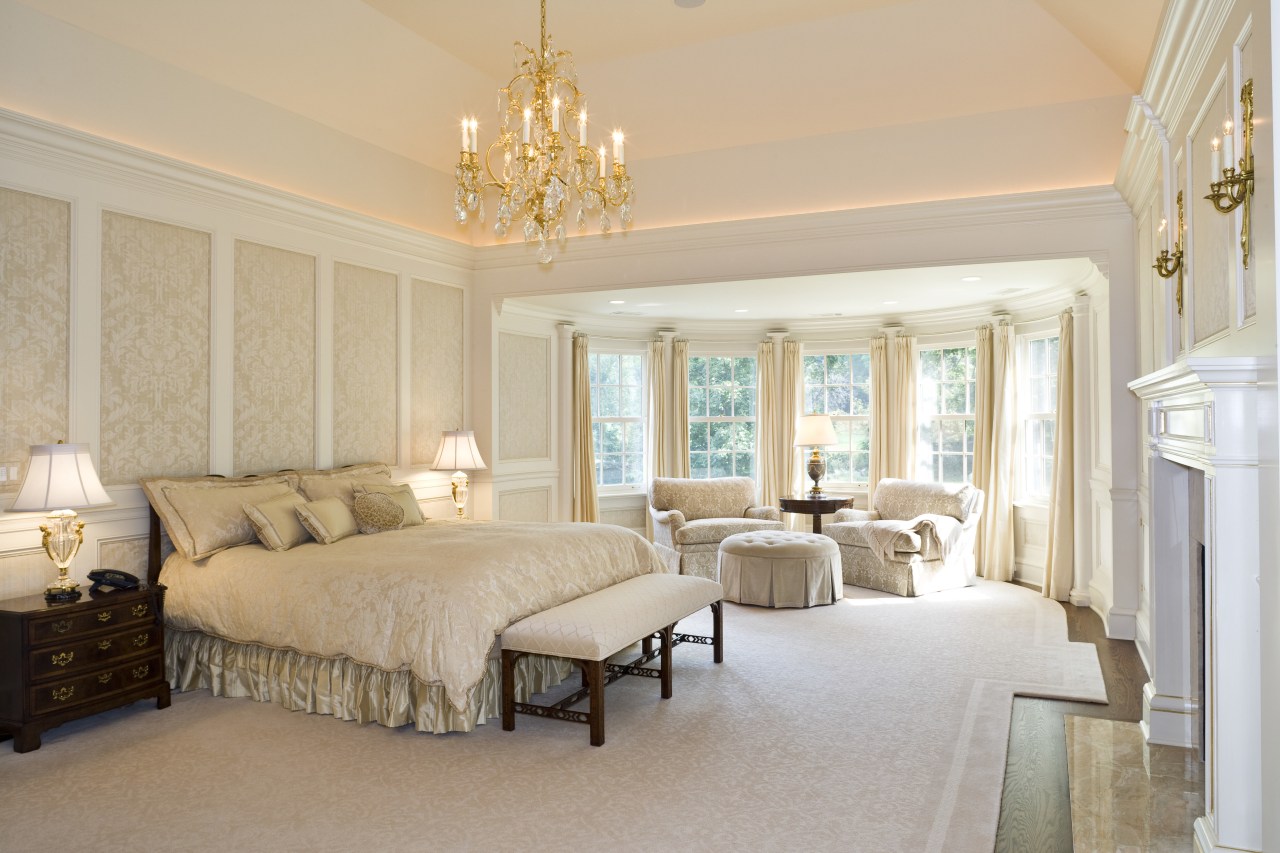
"It was important to retain the purity of the front elevation," says Krasnodebski. "We didn't want to compromise this with modern garaging, so the four-car garage is tucked into a wing towards the rear of the house on the left."
The rear facade retains the Georgian symmetry a large two-story bay window is positioned on a direct axis with the front entrance. Its semicircular shape is repeated outside, in the terrace and garden wall beyond.
The traditional look is reinforced by the interior the foyer has a large, sweeping staircase and black and white floor tiles typical of the era. The arched door openings and white-painted wainscoting are also consistent with the architectural style. The paneled wainscoting features in hallways and formal rooms where the white helps to visually balance the strong color of the walls.
Interior designer Frank Ponterio says the owners wanted the detailing to be both beautiful and historically correct.
"The millwork, including the dentil moldings, architraves and the broken pediment in the formal dining room are all in keeping with the period."
To provide an authentic wallcovering for the foyer, Ponterio says the paper was hand blocked with a pale gold design. Similarly, the carpet runner on the stairs was custom designed, with each step templated for a precise fit. A small settee in the foyer provides a place for setting a purse it also conceals a stair beyond that leads to the basement.
"Gold became the unifying color for the whole house it helps ease the transition between one space and the next."
The consistent color palette was also appropriate for the open layout. Although the rooms are organized in the true Georgian tradition, the design caters to modern lifestyles, providing an easy flow between living areas.
In the formal living room, gold walls are paired with highly detailed millwork, which includes decorative acanthus-flower pilasters with Corinthian capitals.
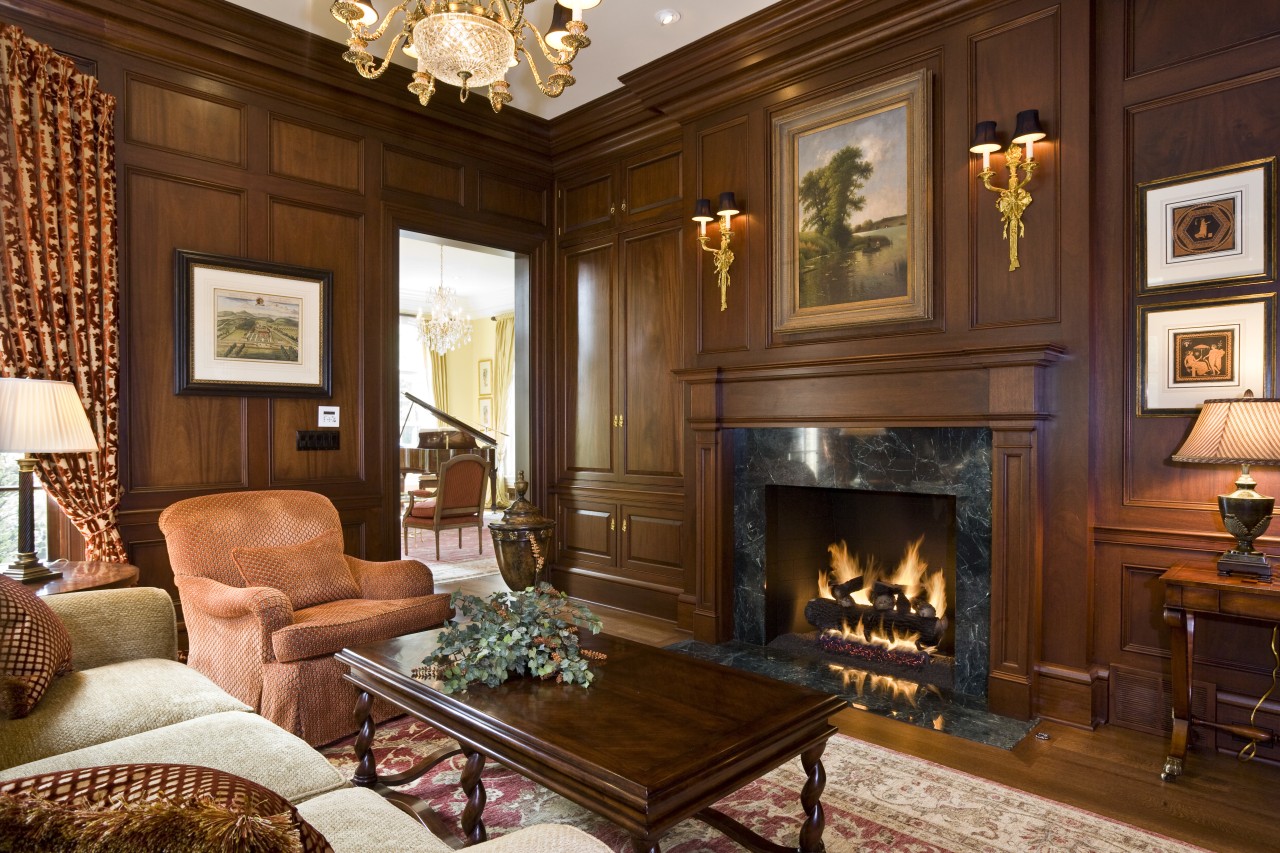
"We made this room a little more ornate, to accentuate the fireplace as the focal point," says Krasnodebski. "The fireplace, which features a rare Italian Nero Portero marble, is also projected slightly into the room for the same reason."
The color palette takes a more dramatic turn in the formal dining room.
"The red silk-upholstered walls simply scream Georgian," says Ponterio. "Red is a particularly good color for a formal dining room, as it warms up the space visually, and is flattering."
The white-painted millwork around the fire in this room features subtle gold-leaf detailing.
In the kitchen, the design team went for a more subtle, soft look. Simple hand-painted and aged Christopher Peacock cabinetry is contrasted by a furniture-style island in mahogany. Traditional-style moldings and backsplash tiles reflect the Georgian era.
The master suite, on the second floor, overlooks the rear of the property. Here, the palette is even more subdued.
"The suite is the antithesis of the rest of the house and its saturated colors," says Ponterio. "These rooms were designed as a private sanctuary for the owners. The interior is almost devoid of color, which helps the owners experience the outdoors."
With its cotton damask-upholstered walls and matching furnishings, the space spells luxury, however, as does the matching master bathroom.
Credit list
Interior designer
Exterior bricks
Dining room area rug
Upholstery and curtain fabrics
Kitchen cabinets
Kitchen and bathroom manufacturer
Roofing
Paints and varnishes
Living room area rug
Sofas, chairs, decorative side tables and lamps
Kitchen and bathroom sinks and faucets
Refrigeration
Story by: Colleen Hawkes
Photography by: Jamie Cobeldick
Home kitchen bathroom commercial design
Connected to the ocean
Simplified seclusion
At one with the Amazon





